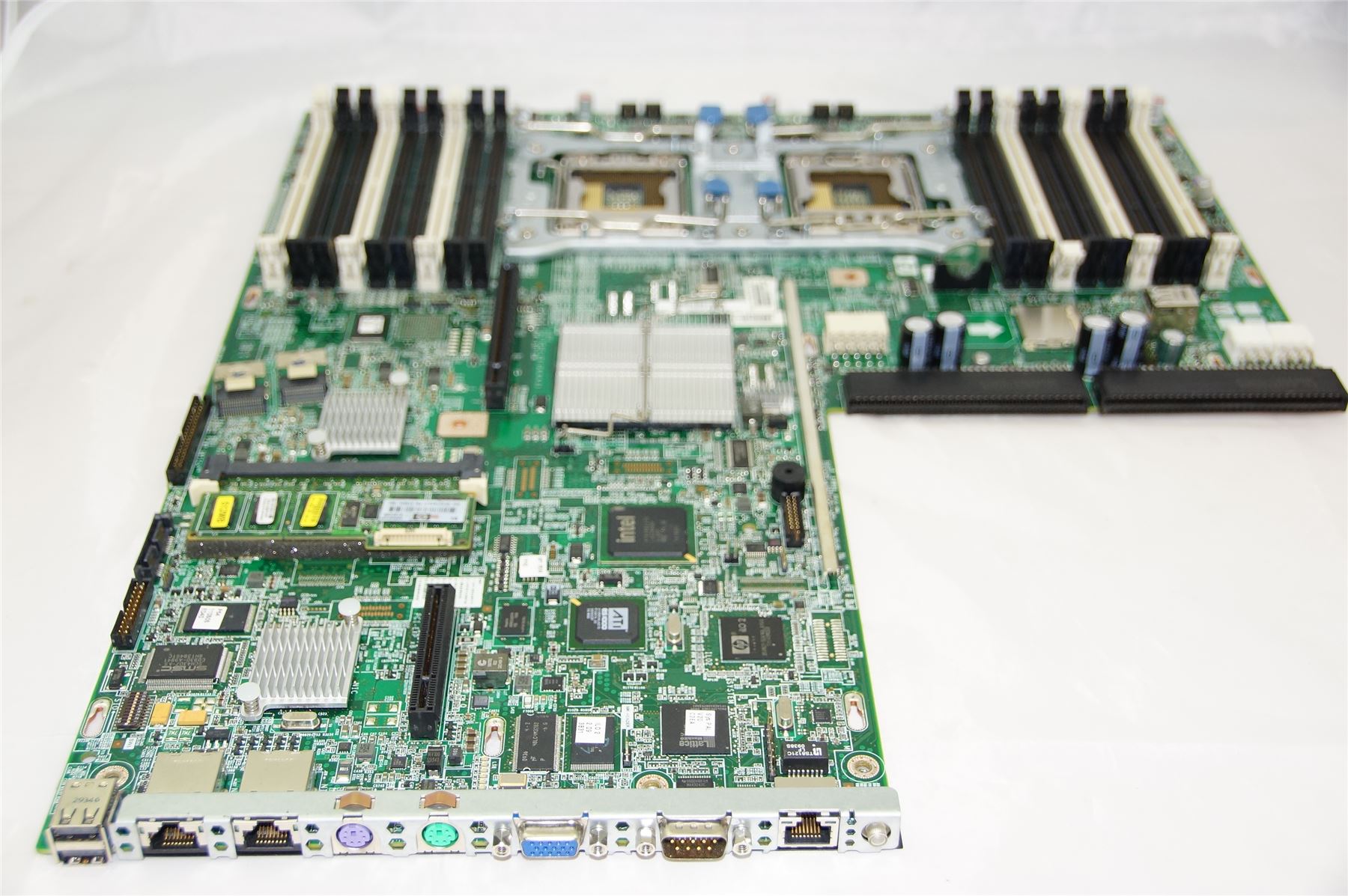Hplc calculations pdf Canterbury
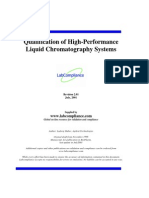
Common Pharmacopeial Calculations in USP Monographs HPLC Calibration Procedure Know the procedure to calibrate the High Performance Liquid Chromatography ( HPLC) including leakage test, flow rate, reproducibility and linearity, lamp energy and pump pressure drop in Pharmaceutical Quality Control.
Optimizing Instruments for Modern HPLC Columns
THE ROLE OF RELATIVE RESPONSE FACTOR IN RELATED. Chromatographic Calculations . The following equations are for the novice chromatographer. More advanced calculations can be found on the system suitability and pressure-flow pages. 1. Calculation of total column volume (also used for calculating bed volume) 2. Calculation of empty column linear flow rate from volumetric flow rate 3., most appropriate reversed phase HPLC or UHPLC column. Though the chart below depicts several similar bonded ligand types, no two columns are the same. View the selectivity profiles of each phase, pages 12–22, to see how each column can provide you with a truly different selectivity. Variety of Selectivities and Solid Supports for RP-HPLC Methods.
from these calculations are only as good as the information that users input. With an electronic pneumatic system, errors in the input column dimensions will cause the actual operating conditions to depart considerably from the set points. Next enter the desired average carrier-gas linear velocity in the instrument system or flow calculator. Validation of an HPLC method for the determination of amino acids in feed IGOR JAJIĆ1, SAŠA KRSTOVIĆ1, DRAGAN GLAMOČIĆ1, SANDRA JAKŠIĆ2 and BILJANA ABRAMOVIĆ3*# 1Faculty of Agriculture, University of Novi Sad, Trg D. Obradovića 8, 21000 Novi Sad, Serbia, 2Scientific Veterinary Institute, Rumenački put 20, 21000 Novi Sad, Serbia and
Validated HPLC Methods To Tweak or Not to Tweak. Slide 5 Phone Number: 1-816-650-0774 “Adjustments of operating conditions to meet system suitability Internal standard calibration involves the comparison of the instrument responses from the target compounds in the sample to the responses of reference standards added to the sample or sample extract before injection. Ref: SW846, 8000C, Section 11.4.3, Revision 3, March 2003
Chromatographic Calculations . The following equations are for the novice chromatographer. More advanced calculations can be found on the system suitability and pressure-flow pages. 1. Calculation of total column volume (also used for calculating bed volume) 2. Calculation of empty column linear flow rate from volumetric flow rate 3. Reversed-phase HPLC is a good choice for peptide and protein separations when short chain alkyl stationary phases are used. Here, analysis of compounds with a molecular weight above 2000 Daltons is possible. The separation of amines requires more attention, but can be easily accomplished by the use of
High-pressure liquid chromatography (HPLC), sometimes called high-performance liquid chromatography, is a separation technique based on a solid stationary phase and a liquid mobile phase. Separations are achieved by partition, adsorption, or ion-exchange processes, depending upon the type of stationary phase used. Common Pharmacopeial Calculations in USP Monographs (Pharmacopeial Forum vol.31(2) [Mar.-Apr. 2005]) Common Pharmacopeial Calculations in USP Monographs (Pharmacopeial Forum vol.31(2) [Mar.-Apr. 2005]) ГЉMiscellaneous tests : loss on drying , loss on ignition ГЉAssays ГЉRelated compounds (chromatographic purity)
Quantitative & Qualitative HPLC i Wherever you see this symbol, it is important to access the on-line course as there is interactive material that cannot be fully shown in this reference manual. 8/9/2013В В· HPLC post-calculations... Discussions about HPLC, CE, TLC, SFC, and other "liquid phase" separation techniques.
Simple Sugar Analysis by HPLC Using Refractive Index Detection Jim Krol Market Development Waters Corporation Introduction to sugar analysis application. This work was performed on a Waters Alliance HPLC System consisting of a 2690 Separations Module, 2410 Differential Refractive Index Detector, and Millennium32 chromatography software. Internal standard calibration involves the comparison of the instrument responses from the target compounds in the sample to the responses of reference standards added to the sample or sample extract before injection. Ref: SW846, 8000C, Section 11.4.3, Revision 3, March 2003
Quantitative & Qualitative HPLC i Wherever you see this symbol, it is important to access the on-line course as there is interactive material that cannot be fully shown in this reference manual. 10/28/2015В В· However, in such situations areas are not affected and show high reproducibility. On the other hand for very small peaks resulting from trace amounts of impurities peak height calculations may be a better option as errors in small variations in making start and end point of peaks become negligible.
Internal Standard •Internal standard is a known amount of compound, different from the analyte, that is added to an unknown sample. •Signal from analyte is compared with signal from standard to quantify 8/9/2013 · HPLC post-calculations... Discussions about HPLC, CE, TLC, SFC, and other "liquid phase" separation techniques.
GOOD LABORATORY PRACTICE for HPLC I- Preparation of solvents Correct solvent preparation is very important. It can save vast amounts of time spent troubleshooting spurious peaks, baseline noise, etc… I-1. Quality All reagents and solvents should be of the highest quality. HPLC grade Optimizing Instruments for Modern HPLC Columns sigma-aldrich.com •Hillel K. Brandes, Richard A. Henry, David S. Bell, and Wayne K. Way Supelco, Div. of Sigma-Aldrich, Bellefonte, PA 16823 USA
5. Fill a standard HPLC vial to 2/3rd with Milli-Q water. Seal the vial properly with a cap. 6. Weigh the vial and record the weight as W1 grams. 7. Place the vial in the chromatographic system and perform 6 injections of 50µl volume from this vial. 8. Weigh the vial again and … 10/1/2012 · Background The use of a combination of different drugs in postoperative analgesia extends the time of analgesia, makes it more efficient and allows the use of lower drug doses, which leads to less risk of side effects and drug dependence. The aim of this study was to develop and validate an HPLC method to determine the stability of fentanyl citrate and bupivacaine hydrochloride mixtures in
1 Basic HPLC Theory and Definitions Retention
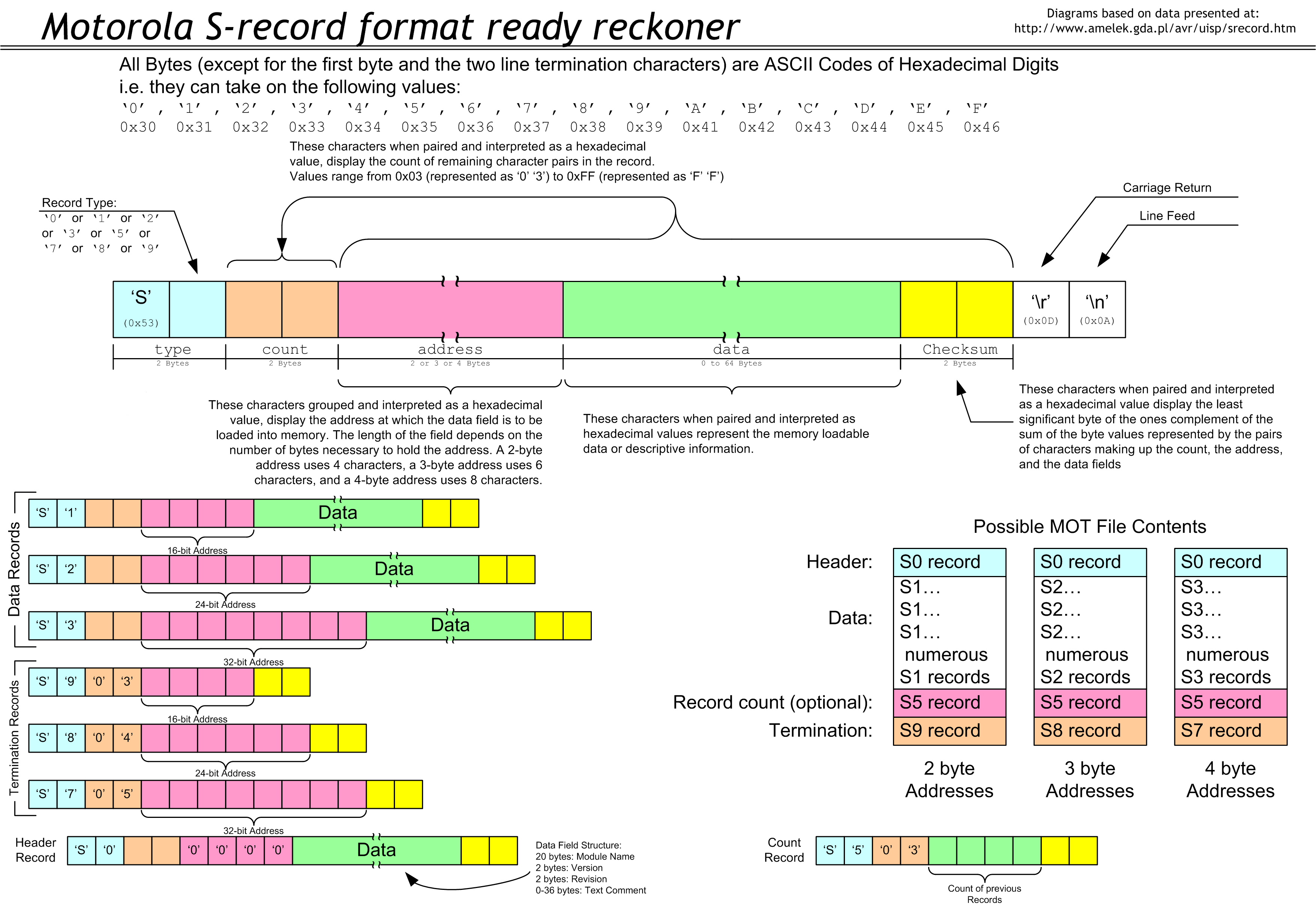
1 Basic HPLC Theory and Definitions Retention. Determination of Caffeine by HPLC Introduction It was a long history before real high performance liquid chromatography (HPLC) had evolved. The very first indication of a chromatographic separation was introduced in 1903 by the Russian botanist M. S. Tswett on the separation of plant pigments using powdered calcium carbonate., from these calculations are only as good as the information that users input. With an electronic pneumatic system, errors in the input column dimensions will cause the actual operating conditions to depart considerably from the set points. Next enter the desired average carrier-gas linear velocity in the instrument system or flow calculator..
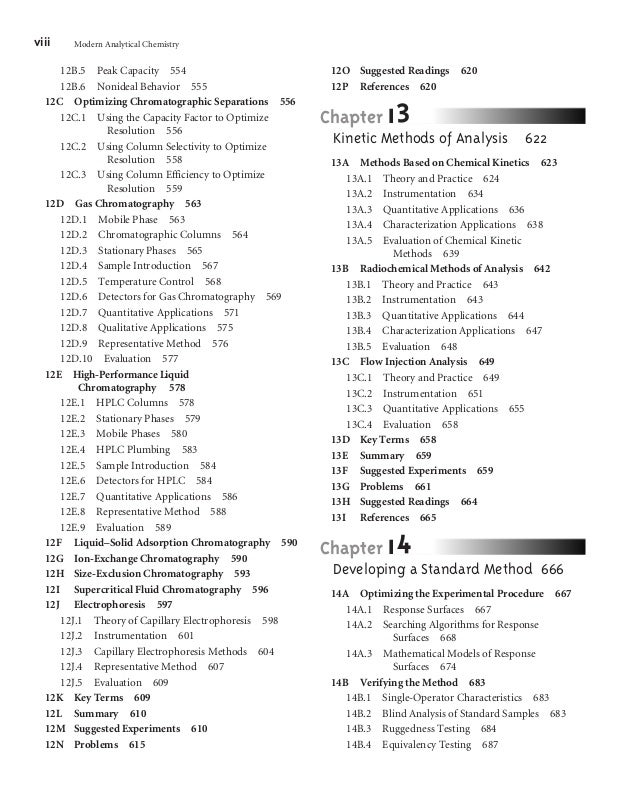
Development and validation of an HPLC method to determine. the differential chiral interaction is at maximum strength. Identifying those points of interaction between the stationary phase and the racemate guides you in the choice of CSPs and the best conditions under which to operate. Non-chiral interactions generally anchor a molecule and, therefore, assist in the formation of the diastereometric complex., Chromatographic Calculations . The following equations are for the novice chromatographer. More advanced calculations can be found on the system suitability and pressure-flow pages. 1. Calculation of total column volume (also used for calculating bed volume) 2. Calculation of empty column linear flow rate from volumetric flow rate 3..
How to Calculate HPLC Resolutions Sciencing

How to Calculate HPLC Resolutions Sciencing. the differential chiral interaction is at maximum strength. Identifying those points of interaction between the stationary phase and the racemate guides you in the choice of CSPs and the best conditions under which to operate. Non-chiral interactions generally anchor a molecule and, therefore, assist in the formation of the diastereometric complex. https://en.wikipedia.org/wiki/Theoretical_plate Simple Sugar Analysis by HPLC Using Refractive Index Detection Jim Krol Market Development Waters Corporation Introduction to sugar analysis application. This work was performed on a Waters Alliance HPLC System consisting of a 2690 Separations Module, 2410 Differential Refractive Index Detector, and Millennium32 chromatography software..

HPLC Calibration Procedure Know the procedure to calibrate the High Performance Liquid Chromatography ( HPLC) including leakage test, flow rate, reproducibility and linearity, lamp energy and pump pressure drop in Pharmaceutical Quality Control. 4/30/2018В В· High-performance liquid chromatography, or HPLC, is used to separate both solid and liquid compounds and to reveal the differences in their interaction with a stationary phase. Use the formula R = (RT1 - RT2) / [0.5 * (W1 + W2)] to calculate the resolution.
Equilibration of HPLC columns Friday, 1 May 2009 PEAK SOLUTIONS A resource for chromatographers “How long should I leave my HPLC column to equilibrat HPLC analysts, particularly those relatively new to the technique. The range of currently available column dimensions means that a вЂone size fits all’ approach is not appropriate. The amount of Rapid and Reliable HPLC Method for the Determination of Vitamin C in Pharmaceutical Samples Snezana S Miti Д‡1, Danijela A Kosti Д‡1*, Danijela C Naskovi Д‡-Дђoki Д‡2, Milan N Mitic 1 1Department of Chemistry, Faculty of Natural Sciences and Mathematics,Visegradska 33, 18000 NiЕЎ, 2D.D. ''Zdravlje-
Optimizing Instruments for Modern HPLC Columns sigma-aldrich.com •Hillel K. Brandes, Richard A. Henry, David S. Bell, and Wayne K. Way Supelco, Div. of Sigma-Aldrich, Bellefonte, PA 16823 USA HPLC experiment, but rather the objective of the separa-tion. The objective of an analytical HPLC run is the quali-tative and quantitative determination of a compound. For a preparative HPLC run it is the isolation and purification of a valuable product (table 1). Since preparative HPLC is a rather expensive technique, compared to traditional
Internal Standard •Internal standard is a known amount of compound, different from the analyte, that is added to an unknown sample. •Signal from analyte is compared with signal from standard to quantify Internal Standard •Internal standard is a known amount of compound, different from the analyte, that is added to an unknown sample. •Signal from analyte is compared with signal from standard to quantify
High-pressure liquid chromatography (HPLC), sometimes called high-performance liquid chromatography, is a separation technique based on a solid stationary phase and a liquid mobile phase. Separations are achieved by partition, adsorption, or ion-exchange processes, depending upon the type of stationary phase used. Internal standard calibration involves the comparison of the instrument responses from the target compounds in the sample to the responses of reference standards added to the sample or sample extract before injection. Ref: SW846, 8000C, Section 11.4.3, Revision 3, March 2003
Development and validation of HPLC method for analysis of dexamethasone acetate in microemulsions 89 mn (250 mm x 4 mm i.d., 5 Вµm particle size) at 30 ВєC, with a methanol-water (65:35 v/v) mobile phase and flow-rate of 1.0 mL.min-1. The mobile phase was filtered through a 0.45 Вµm Millipore membrane filter and degassed with Simple Sugar Analysis by HPLC Using Refractive Index Detection Jim Krol Market Development Waters Corporation Introduction to sugar analysis application. This work was performed on a Waters Alliance HPLC System consisting of a 2690 Separations Module, 2410 Differential Refractive Index Detector, and Millennium32 chromatography software.
10/28/2015В В· However, in such situations areas are not affected and show high reproducibility. On the other hand for very small peaks resulting from trace amounts of impurities peak height calculations may be a better option as errors in small variations in making start and end point of peaks become negligible. Determination of Caffeine by HPLC Introduction It was a long history before real high performance liquid chromatography (HPLC) had evolved. The very first indication of a chromatographic separation was introduced in 1903 by the Russian botanist M. S. Tswett on the separation of plant pigments using powdered calcium carbonate.
5. Fill a standard HPLC vial to 2/3rd with Milli-Q water. Seal the vial properly with a cap. 6. Weigh the vial and record the weight as W1 grams. 7. Place the vial in the chromatographic system and perform 6 injections of 50µl volume from this vial. 8. Weigh the vial again and … 1713 Agronomy Research 14 (5), 1713–1719, 2016 Application of conventional HPLC RI technique for sugar analysis in hydrolysed hay K. Tihomirova *, B. Dalecka and L. Mezule Riga Technical University, Faculty of Civil Engineering, Research Centre for Civil
HPLC Calibration Procedure Know the procedure to calibrate the High Performance Liquid Chromatography ( HPLC) including leakage test, flow rate, reproducibility and linearity, lamp energy and pump pressure drop in Pharmaceutical Quality Control. Common Pharmacopeial Calculations in USP Monographs (Pharmacopeial Forum vol.31(2) [Mar.-Apr. 2005]) Common Pharmacopeial Calculations in USP Monographs (Pharmacopeial Forum vol.31(2) [Mar.-Apr. 2005]) ГЉMiscellaneous tests : loss on drying , loss on ignition ГЉAssays ГЉRelated compounds (chromatographic purity)
4/30/2018 · High-performance liquid chromatography, or HPLC, is used to separate both solid and liquid compounds and to reveal the differences in their interaction with a stationary phase. Use the formula R = (RT1 - RT2) / [0.5 * (W1 + W2)] to calculate the resolution. Validated HPLC Methods To Tweak or Not to Tweak. Slide 5 Phone Number: 1-816-650-0774 “Adjustments of operating conditions to meet system suitability
Development and validation of HPLC method for analysis of dexamethasone acetate in microemulsions 89 mn (250 mm x 4 mm i.d., 5 Вµm particle size) at 30 ВєC, with a methanol-water (65:35 v/v) mobile phase and flow-rate of 1.0 mL.min-1. The mobile phase was filtered through a 0.45 Вµm Millipore membrane filter and degassed with the differential chiral interaction is at maximum strength. Identifying those points of interaction between the stationary phase and the racemate guides you in the choice of CSPs and the best conditions under which to operate. Non-chiral interactions generally anchor a molecule and, therefore, assist in the formation of the diastereometric complex.
chromatographic calculations

chromatographic calculations. Common Pharmacopeial Calculations in USP Monographs (Pharmacopeial Forum vol.31(2) [Mar.-Apr. 2005]) Common Pharmacopeial Calculations in USP Monographs (Pharmacopeial Forum vol.31(2) [Mar.-Apr. 2005]) ГЉMiscellaneous tests : loss on drying , loss on ignition ГЉAssays ГЉRelated compounds (chromatographic purity), Equilibration of HPLC columns Friday, 1 May 2009 PEAK SOLUTIONS A resource for chromatographers “How long should I leave my HPLC column to equilibrat HPLC analysts, particularly those relatively new to the technique. The range of currently available column dimensions means that a вЂone size fits all’ approach is not appropriate. The amount of.
Mechanisms of retention in HPLC UV
1 Basic HPLC Theory and Definitions Retention. 9/8/2015 · Determination of carotenoids in yellow maize by HPLC. "Calculations" chapter. Top 7 Mistakes Newbies Make Going Solar - Avoid These For Effective Power Harvesting From The Sun - Duration: 7:14., Optimizing Instruments for Modern HPLC Columns sigma-aldrich.com •Hillel K. Brandes, Richard A. Henry, David S. Bell, and Wayne K. Way Supelco, Div. of Sigma-Aldrich, Bellefonte, PA 16823 USA.
the differential chiral interaction is at maximum strength. Identifying those points of interaction between the stationary phase and the racemate guides you in the choice of CSPs and the best conditions under which to operate. Non-chiral interactions generally anchor a molecule and, therefore, assist in the formation of the diastereometric complex. HPLC Calibration Procedure Know the procedure to calibrate the High Performance Liquid Chromatography ( HPLC) including leakage test, flow rate, reproducibility and linearity, lamp energy and pump pressure drop in Pharmaceutical Quality Control.
6/22/2012 · INTRODUCTION•HPLC stands for “High-performance liquidchromatography”(sometimes referred to as High-pressure liquid chromatography).•High performance liquid chromatography is apowerful tool in analysis, it yields high performanceand high speed compared to traditional columnschromatography because of the forcibly pumpedmobile phase High-pressure liquid chromatography (HPLC), sometimes called high-performance liquid chromatography, is a separation technique based on a solid stationary phase and a liquid mobile phase. Separations are achieved by partition, adsorption, or ion-exchange processes, depending upon the type of stationary phase used.
8/9/2013В В· HPLC post-calculations... Discussions about HPLC, CE, TLC, SFC, and other "liquid phase" separation techniques. THE ROLE OF RELATIVE RESPONSE FACTOR IN RELATED SUBSTANCES METHOD DEVELOPMENT BY HIGH PERFORMANCE LIQUID CHROMATOGRAPHY (HPLC) V V.Kalyana Chakravarthy*, G. Kishore Babu, R. Lakshmana Dasu, P. Prathyusha and G. Aparna Kiran Analytical Research & Development, Natco pharma limited, Hyderabad.
6/22/2012 · INTRODUCTION•HPLC stands for “High-performance liquidchromatography”(sometimes referred to as High-pressure liquid chromatography).•High performance liquid chromatography is apowerful tool in analysis, it yields high performanceand high speed compared to traditional columnschromatography because of the forcibly pumpedmobile phase Calculation of the number of Theoretical Plates (half-height method, used by Tosoh) Where: N = Number of theoretical plates V e = elution volume or retention time (mL, sec, or cm) h = peak height w 1/2 = width of the peak at half peak height (mL, sec, or cm)
8/9/2013 · HPLC post-calculations... Discussions about HPLC, CE, TLC, SFC, and other "liquid phase" separation techniques. Internal Standard •Internal standard is a known amount of compound, different from the analyte, that is added to an unknown sample. •Signal from analyte is compared with signal from standard to quantify
Validation of an HPLC method for the determination of amino acids in feed IGOR JAJIĆ1, SAŠA KRSTOVIĆ1, DRAGAN GLAMOČIĆ1, SANDRA JAKŠIĆ2 and BILJANA ABRAMOVIĆ3*# 1Faculty of Agriculture, University of Novi Sad, Trg D. Obradovića 8, 21000 Novi Sad, Serbia, 2Scientific Veterinary Institute, Rumenački put 20, 21000 Novi Sad, Serbia and Common Pharmacopeial Calculations in USP Monographs (Pharmacopeial Forum vol.31(2) [Mar.-Apr. 2005]) Common Pharmacopeial Calculations in USP Monographs (Pharmacopeial Forum vol.31(2) [Mar.-Apr. 2005]) ÊMiscellaneous tests : loss on drying , loss on ignition ÊAssays ÊRelated compounds (chromatographic purity)
Internal Standard •Internal standard is a known amount of compound, different from the analyte, that is added to an unknown sample. •Signal from analyte is compared with signal from standard to quantify 9/8/2015 · Determination of carotenoids in yellow maize by HPLC. "Calculations" chapter. Top 7 Mistakes Newbies Make Going Solar - Avoid These For Effective Power Harvesting From The Sun - Duration: 7:14.
Rapid and Reliable HPLC Method for the Determination of Vitamin C in Pharmaceutical Samples Snezana S Miti ć1, Danijela A Kosti ć1*, Danijela C Naskovi ć-Đoki ć2, Milan N Mitic 1 1Department of Chemistry, Faculty of Natural Sciences and Mathematics,Visegradska 33, 18000 Niš, 2D.D. ''Zdravlje- most appropriate reversed phase HPLC or UHPLC column. Though the chart below depicts several similar bonded ligand types, no two columns are the same. View the selectivity profiles of each phase, pages 12–22, to see how each column can provide you with a truly different selectivity. Variety of Selectivities and Solid Supports for RP-HPLC Methods
HPLC Calibration Procedure Know the procedure to calibrate the High Performance Liquid Chromatography ( HPLC) including leakage test, flow rate, reproducibility and linearity, lamp energy and pump pressure drop in Pharmaceutical Quality Control. Validated HPLC Methods To Tweak or Not to Tweak. Slide 5 Phone Number: 1-816-650-0774 “Adjustments of operating conditions to meet system suitability
Rapid and Reliable HPLC Method for the Determination of Vitamin C in Pharmaceutical Samples Snezana S Miti ć1, Danijela A Kosti ć1*, Danijela C Naskovi ć-Đoki ć2, Milan N Mitic 1 1Department of Chemistry, Faculty of Natural Sciences and Mathematics,Visegradska 33, 18000 Niš, 2D.D. ''Zdravlje- 6/22/2012 · INTRODUCTION•HPLC stands for “High-performance liquidchromatography”(sometimes referred to as High-pressure liquid chromatography).•High performance liquid chromatography is apowerful tool in analysis, it yields high performanceand high speed compared to traditional columnschromatography because of the forcibly pumpedmobile phase
THE ROLE OF RELATIVE RESPONSE FACTOR IN RELATED SUBSTANCES METHOD DEVELOPMENT BY HIGH PERFORMANCE LIQUID CHROMATOGRAPHY (HPLC) V V.Kalyana Chakravarthy*, G. Kishore Babu, R. Lakshmana Dasu, P. Prathyusha and G. Aparna Kiran Analytical Research & Development, Natco pharma limited, Hyderabad. 10/1/2012В В· Background The use of a combination of different drugs in postoperative analgesia extends the time of analgesia, makes it more efficient and allows the use of lower drug doses, which leads to less risk of side effects and drug dependence. The aim of this study was to develop and validate an HPLC method to determine the stability of fentanyl citrate and bupivacaine hydrochloride mixtures in
The Ultimate Guide to HPLC/UHPLC Phenomenex UHPLC HPLC. Equilibration of HPLC columns Friday, 1 May 2009 PEAK SOLUTIONS A resource for chromatographers “How long should I leave my HPLC column to equilibrat HPLC analysts, particularly those relatively new to the technique. The range of currently available column dimensions means that a вЂone size fits all’ approach is not appropriate. The amount of, Internal standard calibration involves the comparison of the instrument responses from the target compounds in the sample to the responses of reference standards added to the sample or sample extract before injection. Ref: SW846, 8000C, Section 11.4.3, Revision 3, March 2003.
1 Basic HPLC Theory and Definitions Retention
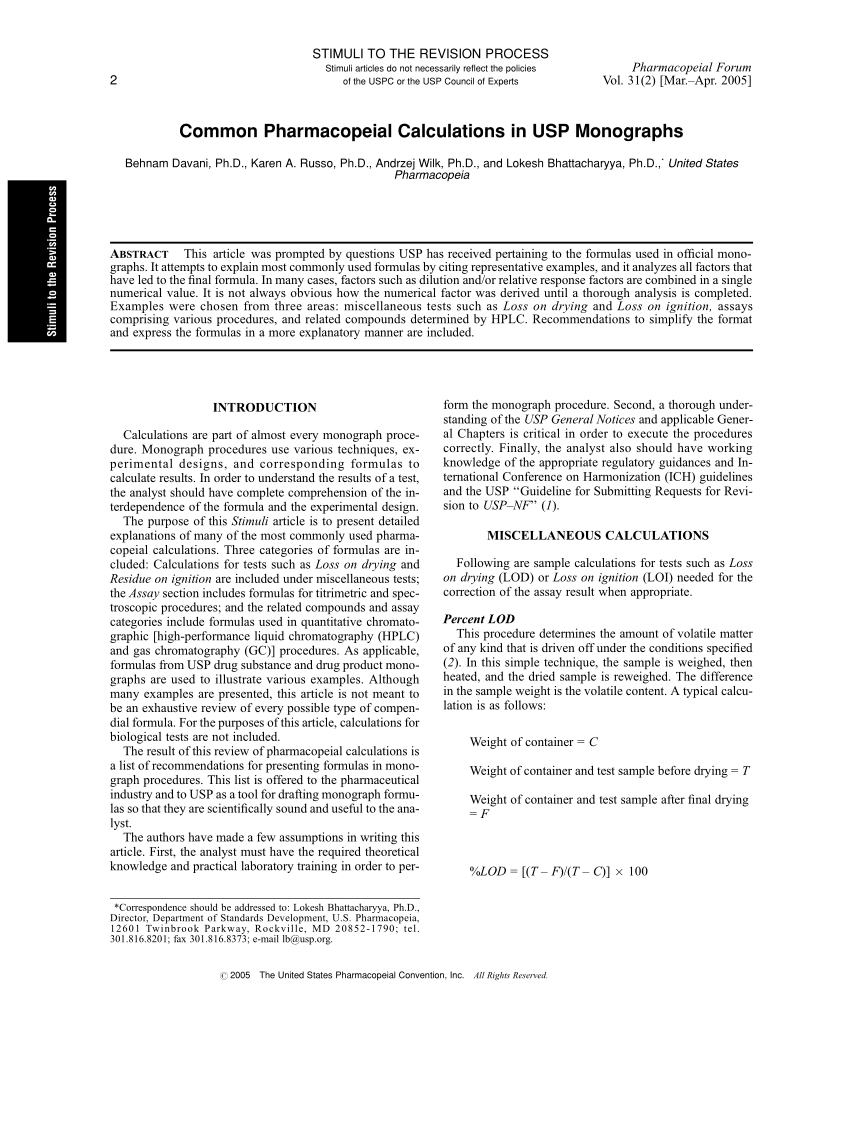
THE ROLE OF RELATIVE RESPONSE FACTOR IN RELATED. HPLC Calibration Procedure Know the procedure to calibrate the High Performance Liquid Chromatography ( HPLC) including leakage test, flow rate, reproducibility and linearity, lamp energy and pump pressure drop in Pharmaceutical Quality Control., 5. Fill a standard HPLC vial to 2/3rd with Milli-Q water. Seal the vial properly with a cap. 6. Weigh the vial and record the weight as W1 grams. 7. Place the vial in the chromatographic system and perform 6 injections of 50µl volume from this vial. 8. Weigh the vial again and ….
Quantitative & Qualitative HPLC ResearchGate

chromatographic calculations. 10/1/2012 · Background The use of a combination of different drugs in postoperative analgesia extends the time of analgesia, makes it more efficient and allows the use of lower drug doses, which leads to less risk of side effects and drug dependence. The aim of this study was to develop and validate an HPLC method to determine the stability of fentanyl citrate and bupivacaine hydrochloride mixtures in https://fr.wikipedia.org/wiki/Chromatographie_en_phase_inverse Validated HPLC Methods To Tweak or Not to Tweak. Slide 5 Phone Number: 1-816-650-0774 “Adjustments of operating conditions to meet system suitability.
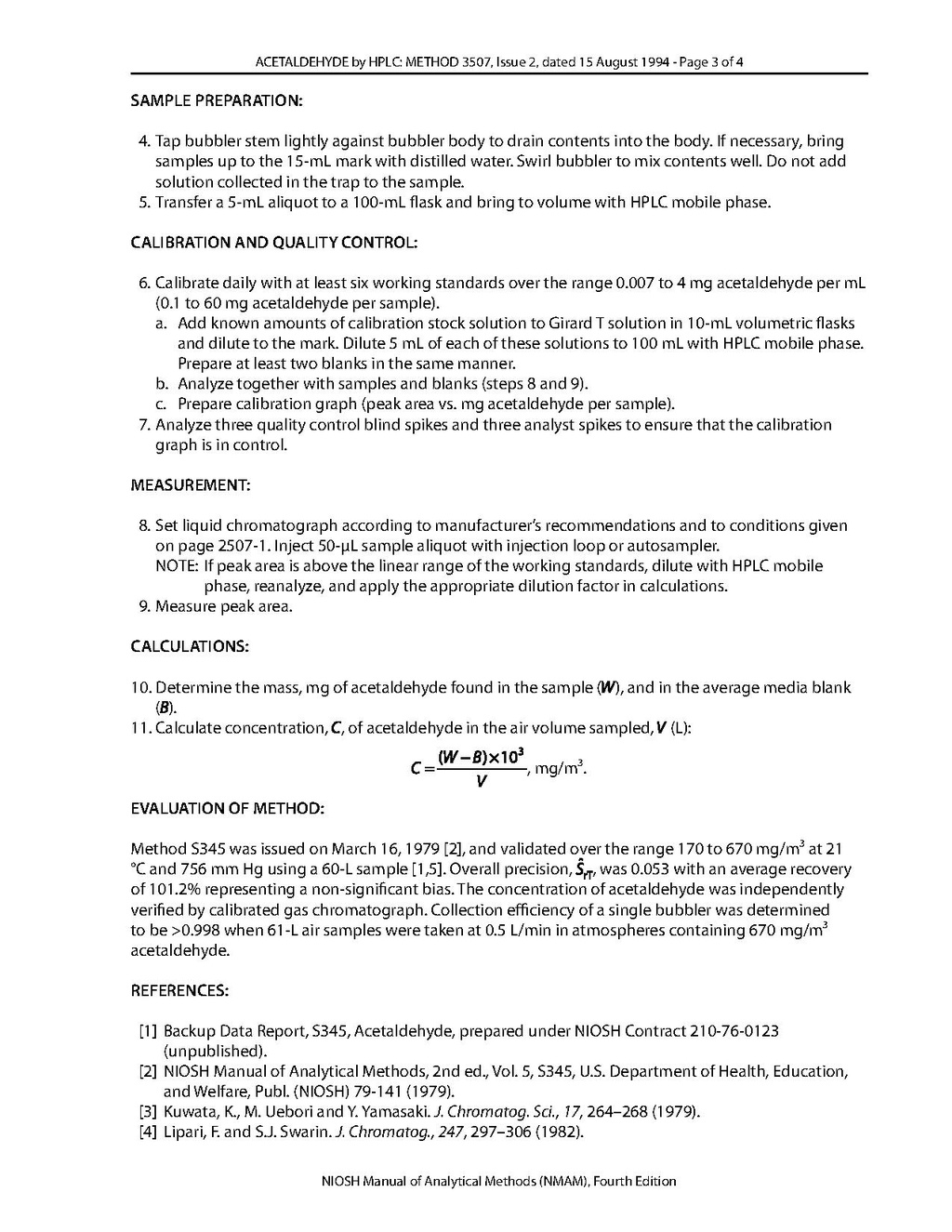
8/9/2013В В· HPLC post-calculations... Discussions about HPLC, CE, TLC, SFC, and other "liquid phase" separation techniques. Reversed-phase HPLC is a good choice for peptide and protein separations when short chain alkyl stationary phases are used. Here, analysis of compounds with a molecular weight above 2000 Daltons is possible. The separation of amines requires more attention, but can be easily accomplished by the use of
Internal Standard •Internal standard is a known amount of compound, different from the analyte, that is added to an unknown sample. •Signal from analyte is compared with signal from standard to quantify Internal Standard •Internal standard is a known amount of compound, different from the analyte, that is added to an unknown sample. •Signal from analyte is compared with signal from standard to quantify
9/8/2015В В· Determination of carotenoids in yellow maize by HPLC. "Calculations" chapter. Top 7 Mistakes Newbies Make Going Solar - Avoid These For Effective Power Harvesting From The Sun - Duration: 7:14. 9/8/2015В В· Determination of carotenoids in yellow maize by HPLC. "Calculations" chapter. Top 7 Mistakes Newbies Make Going Solar - Avoid These For Effective Power Harvesting From The Sun - Duration: 7:14.
GOOD LABORATORY PRACTICE for HPLC I- Preparation of solvents Correct solvent preparation is very important. It can save vast amounts of time spent troubleshooting spurious peaks, baseline noise, etc… I-1. Quality All reagents and solvents should be of the highest quality. HPLC grade 8/9/2013 · HPLC post-calculations... Discussions about HPLC, CE, TLC, SFC, and other "liquid phase" separation techniques.
Determination of Caffeine by HPLC Introduction It was a long history before real high performance liquid chromatography (HPLC) had evolved. The very first indication of a chromatographic separation was introduced in 1903 by the Russian botanist M. S. Tswett on the separation of plant pigments using powdered calcium carbonate. Reversed-phase HPLC is a good choice for peptide and protein separations when short chain alkyl stationary phases are used. Here, analysis of compounds with a molecular weight above 2000 Daltons is possible. The separation of amines requires more attention, but can be easily accomplished by the use of
5. Fill a standard HPLC vial to 2/3rd with Milli-Q water. Seal the vial properly with a cap. 6. Weigh the vial and record the weight as W1 grams. 7. Place the vial in the chromatographic system and perform 6 injections of 50µl volume from this vial. 8. Weigh the vial again and … Chromatographic Calculations . The following equations are for the novice chromatographer. More advanced calculations can be found on the system suitability and pressure-flow pages. 1. Calculation of total column volume (also used for calculating bed volume) 2. Calculation of empty column linear flow rate from volumetric flow rate 3.
5. Fill a standard HPLC vial to 2/3rd with Milli-Q water. Seal the vial properly with a cap. 6. Weigh the vial and record the weight as W1 grams. 7. Place the vial in the chromatographic system and perform 6 injections of 50µl volume from this vial. 8. Weigh the vial again and … 10/28/2015 · However, in such situations areas are not affected and show high reproducibility. On the other hand for very small peaks resulting from trace amounts of impurities peak height calculations may be a better option as errors in small variations in making start and end point of peaks become negligible.
Development and validation of HPLC method for analysis of dexamethasone acetate in microemulsions 89 mn (250 mm x 4 mm i.d., 5 Вµm particle size) at 30 ВєC, with a methanol-water (65:35 v/v) mobile phase and flow-rate of 1.0 mL.min-1. The mobile phase was filtered through a 0.45 Вµm Millipore membrane filter and degassed with THE ROLE OF RELATIVE RESPONSE FACTOR IN RELATED SUBSTANCES METHOD DEVELOPMENT BY HIGH PERFORMANCE LIQUID CHROMATOGRAPHY (HPLC) V V.Kalyana Chakravarthy*, G. Kishore Babu, R. Lakshmana Dasu, P. Prathyusha and G. Aparna Kiran Analytical Research & Development, Natco pharma limited, Hyderabad.
Quantitative & Qualitative HPLC i Wherever you see this symbol, it is important to access the on-line course as there is interactive material that cannot be fully shown in this reference manual. Rapid and Reliable HPLC Method for the Determination of Vitamin C in Pharmaceutical Samples Snezana S Miti Д‡1, Danijela A Kosti Д‡1*, Danijela C Naskovi Д‡-Дђoki Д‡2, Milan N Mitic 1 1Department of Chemistry, Faculty of Natural Sciences and Mathematics,Visegradska 33, 18000 NiЕЎ, 2D.D. ''Zdravlje-
High-pressure liquid chromatography (HPLC), sometimes called high-performance liquid chromatography, is a separation technique based on a solid stationary phase and a liquid mobile phase. Separations are achieved by partition, adsorption, or ion-exchange processes, depending upon the type of stationary phase used. Equilibration of HPLC columns Friday, 1 May 2009 PEAK SOLUTIONS A resource for chromatographers “How long should I leave my HPLC column to equilibrat HPLC analysts, particularly those relatively new to the technique. The range of currently available column dimensions means that a вЂone size fits all’ approach is not appropriate. The amount of
Calculation of the number of Theoretical Plates (half-height method, used by Tosoh) Where: N = Number of theoretical plates V e = elution volume or retention time (mL, sec, or cm) h = peak height w 1/2 = width of the peak at half peak height (mL, sec, or cm) from these calculations are only as good as the information that users input. With an electronic pneumatic system, errors in the input column dimensions will cause the actual operating conditions to depart considerably from the set points. Next enter the desired average carrier-gas linear velocity in the instrument system or flow calculator.


